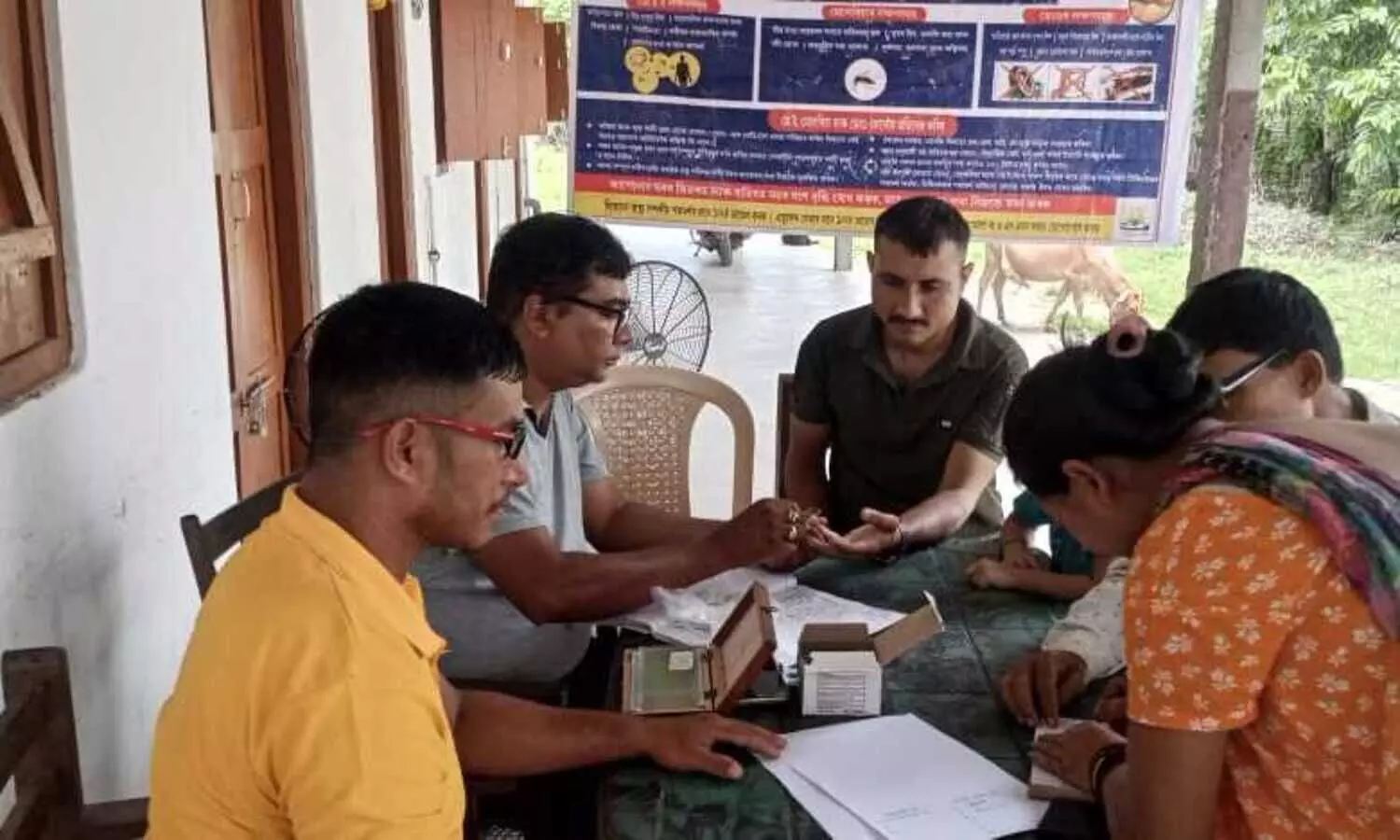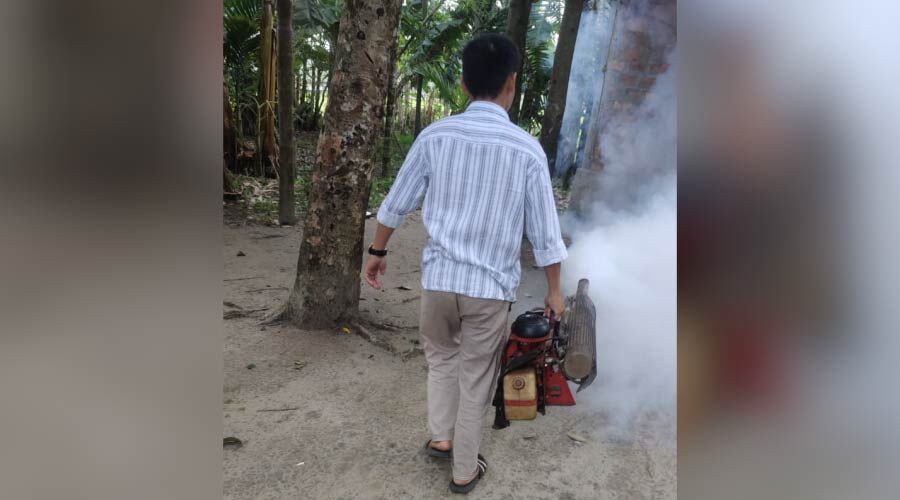No cure, no exit: Why Japanese Encephalitis haunts Assam every monsoon
With 28 dead & counting, Japanese Encephalitis returns to haunt flood-prone Assam once more;

An awareness programme on vector borne disease held in Sonitpur. (Photo: NHM Sonitpur)
As monsoon settles across Assam, another familiar threat has re-emerged — Japanese Encephalitis (JE).
With 28 deaths reported till July 21, Assam once again finds itself in the grip of the vector-borne disease that returns with unsettling regularity each monsoon.
In Guwahati, public health authorities have intensified surveillance and vector control efforts across vulnerable districts, even as hospitals remain on high alert.
As of July 18, 15 districts are grappling with active JE cases, with Darrang, Nalbari, and Kamrup accounting for 45 patients currently admitted at Gauhati Medical College and Hospital (GMCH).
On the preparedness front, GMCH has significantly ramped up its capacity.
“GMCH is fully equipped to deal with the crisis. From April to July 18, we admitted nearly 100 JE patients. Of these, 22 have sadly died, six sought treatment elsewhere, and 15 have recovered,” said Dr. Ujjal Kumar Sarmah, Deputy Superintendent of GMCH.
He stressed that early medical intervention makes a significant difference. “If patients are brought in at the first signs of illness, the disease is manageable,” he added.

The state’s health machinery is now banking on a multi-pronged approach — public awareness, fogging operations
The cause
Experts say the recent surge is closely tied to water-logging and inadequate drainage systems, especially in rural and semi-urban pockets.
Stagnant water has created fertile breeding grounds for Culex mosquitoes, the primary carriers of the JE virus.
“Japanese Encephalitis originated in Japan, which is how it got its name. It tends to spike during the monsoon, especially in areas where paddy fields are filled with stagnant water,” explained Dr. Kakuli Talukdar, MD in Community Medicine.
But paddy fields aren't the only hotspots. According to Dr. Sarmah, the virus also circulates in pigs and certain birds, making farms and livestock areas high-risk zones.
“When a Culex mosquito bites an infected pig or bird and then bites a human, the virus is transmitted. This is why people should avoid pigsties and take precautions — like wearing long-sleeved clothing and using mosquito nets,” he said.
Interestingly, one local mitigation strategy involves building cow sheds close to homes. “The mosquitoes tend to be attracted to cattle, so in theory, they bite cows instead of humans. It’s not foolproof, but it helps reduce transmission,” Dr. Sarmah added.
The state’s health machinery is now banking on a multi-pronged approach — public awareness, fogging operations, larvicide spraying, and continued vaccination drives in high-risk districts.
But with erratic weather patterns and inadequate rural drainage, officials warn that vigilance must remain high.
An awareness programme on Japanese Encephalitis (JE), Dengue, Malaria, and other vector-borne diseases (VBDs) was conducted in North Jamuguri BPHC jurisdiction. (Photo: NHM Sonitpur)
Fear on the ground
Since 2013, Assam has been running large-scale vaccination drives against Japanese Encephalitis, covering over 1 crore people every year.
The JE vaccine is now also included in the regular immunisation schedule for all newborns — an important move to protect future generations.
Between 2020 and 2023, the total number of cases in Assam crossed 600.
This year’s rising toll has triggered widespread concern across the state, with many residents expressing anxiety about how to protect themselves and their families.
“We heard on the news that JE cases are rising, and it’s made people fearful. As a parent, I constantly worry about my son — whether he’s playing outside or at school,” said Reboti Das, a mother from Noonmati.
The cure
As Assam battles this seasonal outbreak, the focus remains on community vigilance, timely vaccination, and aggressive mosquito control to prevent further escalation.
Asked whether a permanent solution exists to eliminate the disease, Dr Sarmah was candid, “Complete eradication isn’t possible. Paddy fields and pigs — both central to the virus’s transmission cycle — will always be part of our landscape. Prevention is our only real strategy.”
Dr Talukdar echoed the sentiment. “There’s no cure for Japanese Encephalitis. It can only be prevented. People must use mosquito nets, avoid water-logged areas, and get vaccinated. And if symptoms like fever or headache arise, seek medical attention immediately,” she said.
Health experts continue to underscore early detection and immunisation as the most effective weapons against JE.
As monsoon rains continue to lash Assam, bringing with them the threat of mosquito-borne illnesses, the state’s fight against Japanese Encephalitis is a test of public awareness, healthcare readiness, and civic responsibility.
While the virus may be here to stay, its impact need not be fatal — if communities act in time.
Using of mosquito nets, avoiding water logged areas will help prevent getting the disease. (Photo: NHM Sonitpur)

